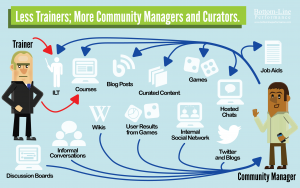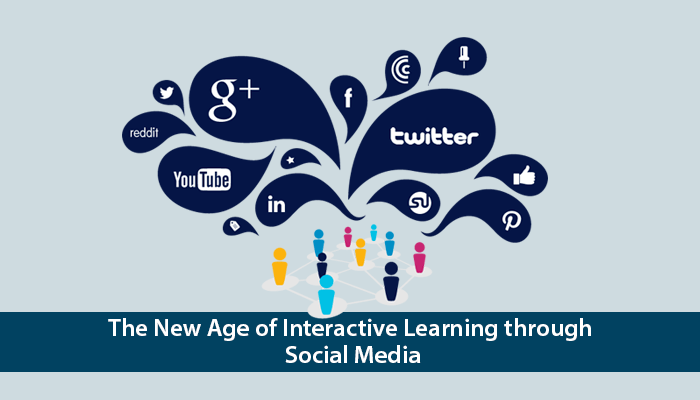Internet has brought people closer together and Social Media platforms have played a vital role in forming communities online, anyone can be part of these communities with just a few clicks online and it would just take a couple of minutes to discover and join a new community rather than the traditional way of finding people of similar interests and communities which takes up lots of time just to discover the community and like-minded people. These technologies allow us to extend and broaden our communities, we do not see our fellow members solely in supermarkets and local stores or at meetings and events; rather we can connect with them through email, text, and social media (Hopkins, 2015).

http://www.bottomlineperformance.com/wordpress/wp-content/uploads/2013/07/Graphics_Independent2-06.png
Online communities can be found over various platforms such as Facebook, Instagram, Twitter, Google+, Pinterest, YouTube, LinkedIn, etc. Facebook is the most popular platform for online communities. All sort of communities can be found over Facebook, university students are encouraged to join the various communities within the university over Facebook, this way, the new students can instantly find like-minded people and start making friends as soon as they join their new university. There are people sharing food recipes, there are car enthusiasts, people wanting to explore nature and go hiking every weekend, computer programmers, teachers, economists, communities for politically active people, there is something for everyone on this platform and anyone can join these communities from any part of the world. Hashtags are another way of finding similar threads, or people discussing similar topics, hashtags are quite popular on Twitter and on Instagram as well. Anything can be made viral or trending if lots of people discuss a specific topic on Twitter and then it appears under a list of trending topics. Use of Twitter is popular among politicians and among people following politics, numerous communities related to politics can be found over Twitter, lots of journalists presenting their views, and people presenting their views about politicians. Instagram on the other hand, lets its users to use hashtags to find content that they might be interested in and follow the content creators and people of similar interests. Another very effective learning method that students nowadays use a lot is, finding a YouTube channel about the field they may be interested in learning about and starting discussions on the content on their YouTube channels, I personally have friends who have started YouTube channels and teach study of medicine and pharma on YouTube and answer any questions that their viewers may have in the comments section or answer questions in the discussion forms. Students find it a lot easier to study this way because they can access these contents any time and at any location and if they have missed some portion in classes then they can catch up to their course materials on such YouTube channels.
But building communities online comes with side effects too. There is higher risk of people being bullied or being trolled online as they get to hide behind a fake identity, or they may not disclose their identity which gives them a chance to anonymously bully other group members or community members on these Social Media Platforms without being caught. Also, too much of an emphasis on online communities can exclude those not online and therefore, community development should take place both online and offline.
Internet and Social Media has transformed the way people connect and find communities, and this has only done betterment to it. It has helped the communities grow and thrive and enabled people to join communities without being concerned about being physically present there. And with all these, people need to be careful while making friends on social media because they may not know the real identity of the person.
References:
Hopkins, J. (2015). Teaching online: A guide to theory, research, and practice.
Retrieved from: https://ebookcentral-proquest-com.ezproxy.library.uvic.ca/lib/uvic/reader.action?docID=3318874&ppg=238

Leave a Reply